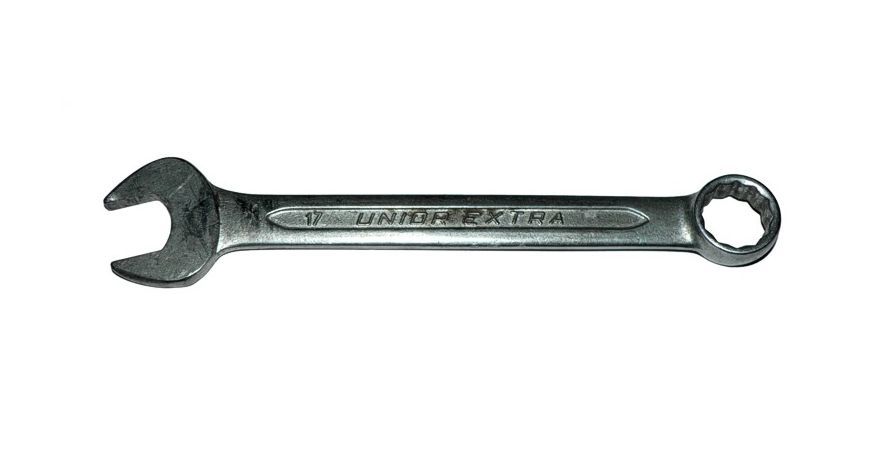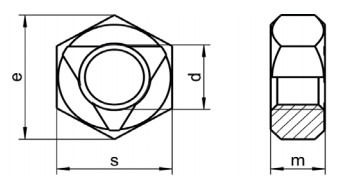
What Size Spanner do I need?
"What Size Spanner do I need ?" is a common question. The immediate answer is another question: "What type of thread does your nut have?"
A "Spanner" is often called a "wrench" and is generally used to grip a nut or bolt while applying torque or put more simply to help you fasten and loosen nuts and bolts.
Most common are open-ended, ring spanners or combination open / ring spanners like these:

Most spanners do have their size stamped on them, but this is usually the distance across the flats of the nut and can be confusing, so we will help you to determine the size you need, and show why you should not just grab one that seems close enough.
There are many thread types, Metric, UNF, BSW, BSP to name a few. And each of these thread types has their own thread specifications and also specify the distance across the flats of the nut. And it is the distance across the flats of the nut that is most important when choosing a spanner size. As shown on this diagram the dimensions labelled "S" is the 'across the flats (AF)' measurement. The jaws of the spanner should snuggly fit with little or no gap.
We should also be aware that the size given to any nut is relevant to the thread type and size. So a metric M6 nut for example means the measurement 'd' shown above is (approx) 6 mm. and this 'M6 - 6 mm' measurement bears no resemblance to the distance across the flats or the spanner size required.
There are many types of threads on nuts and bolts, Metric, UNC & BSP are just three that we deal with. And they all have different measurements depending on the international standard they are manufactured to. For example, a metric M6 nut is very close to an imperial 1/4" UNC thread. Measuring the thread manually you could be mistaken for thinking they are the same. And a 1/4" BSP nut may sound similar but is vastly different in size
A metric M6 nut is likely to be 10 mm across the flats, a 1/4" UNC likely to be 11 mm (and a 1/4" BSP nut would be more like 23 mm across the flats). So using the 1/4" UNC (11mm) spanner instead of the M6 spanner (10 mm) means the spanner will easily fit over the M6 nut, but it would be a little loose. As you try to tighten the nut that small gap would allow the jaws of the spanner to slip and more than likely cause you to round off the edges of the nut.
As you can see, it is best to know the thread type of the nut and then choose the spanner size that will then give the best fit. Once you know the thread type and size of the nut, then it is simple to look up the correct spanner size.
For metric nuts
Nut Size |
Spanner Size (Stamped) |
| M3 | 5.5 mm |
| M4 | 7 mm |
| M5 | 8 mm |
| M6 | 10 mm |
| M8 | 13 mm |
| M10 | 17 mm |
| M12 | 19 mm |
| M14 | 22 mm |
| M16 | 24 mm |
| M18 | 27 mm |
| M20 | 30 mm |
| M24 | 36 mm |
| M30 | 46 mm |
| M36 | 55 mm |
So as you can see above, once you know you have a metric M10 nut, then you can easily read off the chart then you need a spanner stamped with 17 mm. No need to guess
And for UNC nuts:
For Imperial / UNC nuts
Nut Size |
Spanner Size (Stamped) |
| 1/4" | 7/16" |
| 5/16" | 1/2" |
| 3/8" | 9/16" |
| 7/16" | 5/8" |
| 1/2" | 3/4" |
| 9/16" | 7/8" |
| 5/8" | 15/16" |
| 3/4" | 1-1/8" |
| 1" | 1-1/2" |

